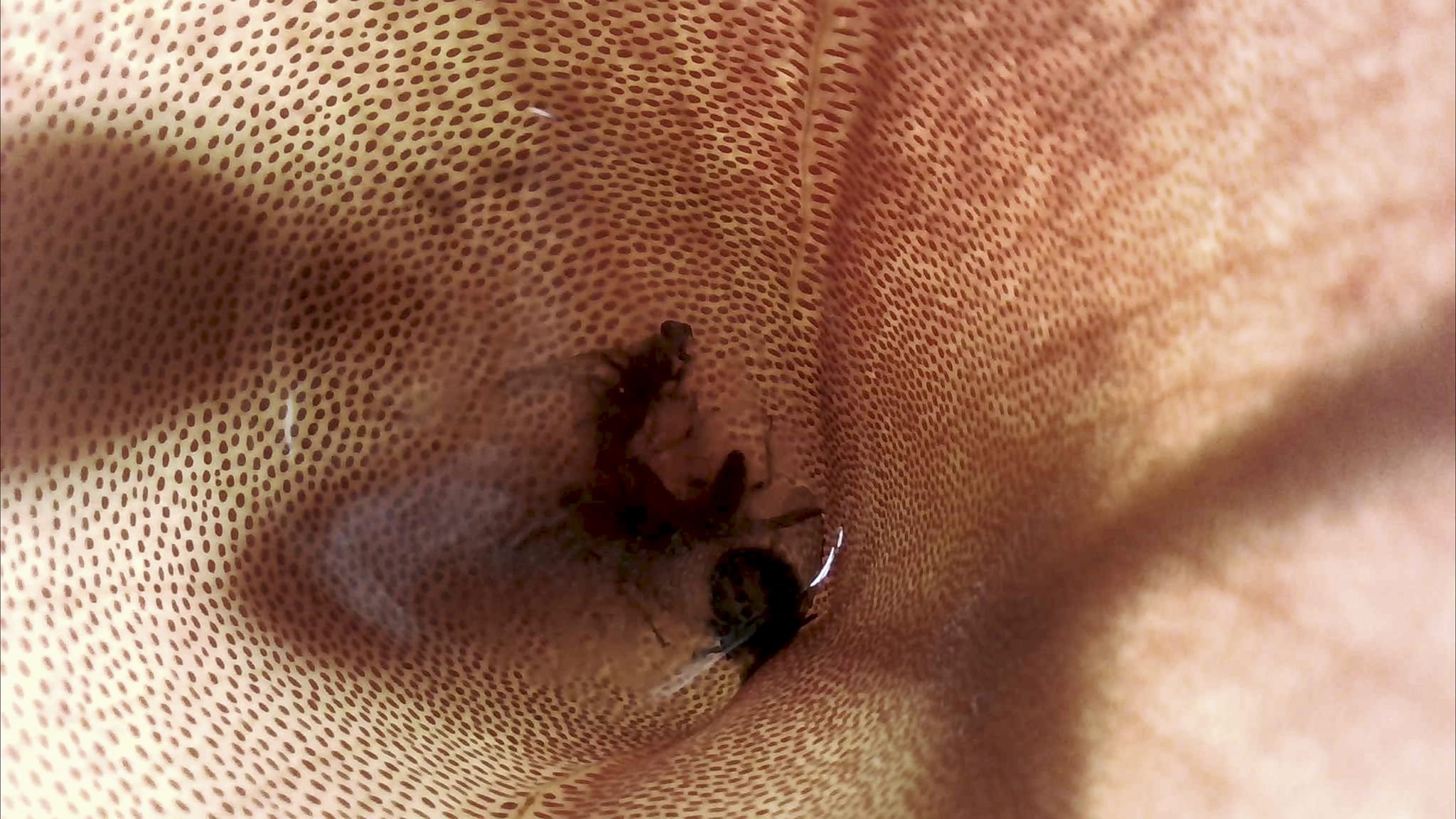“The work often starts from an obsession with something; after that, we’ll make our way through associations that may shed light on a more emotional experience of it”
‘VIPER SNAKE, RED PAINT, HEAT WAVE.’ These words appear as subtitles towards the end of Daughter of Dog (2024), an enigmatic short video by Revital Cohen and Tuur Van Balen, shown as part of their exhibition of the same name at Mostyn, Wales, earlier this year. The unlikely sequence of images conjured up by this incongruous phrase make me think of a whimsical version of the ‘what3words’ geolocating tool, the novel mapping-app that enables any three-metre square on Earth to be located using a unique combination of three words. It’s as if the words listed in the video might lead us to some specific, unknown location. Such an imagined encounter, of nonsense poetry being used to map ourselves onto the globe, feels appropriate in the context of Cohen and Van Balen’s practice, which uses video, sculpture and performance to create expanded collages that trace the wider economic and ideological structures that hold us. Creating juxtapositions and conceptual collisions of what seem to be unrelated things – things like a field of mustard flowers, Atlas moths flexing their wings, robot dogs getting pushed around and dancers enacting a formalised version of a mosh pit, as we see in the Daughter of Dog video – whether in a room or a film, becomes a way to trace the infrastructure of global commodities. The video continues as a fever-dream daze of quickly interspersed images, with a soundtrack of a relentless, driving drumbeat and the subtitles’ elusive, foreboding poetry: ‘Now the earth is formless and empty’; ‘how do I make pearls out of the stress’. Outside the darkened projection room stood plinths bearing pots of carnivorous pitcher plants and various iterations of snakelike sculptures, their bodies cartoonishly made up of thin steel bars, their heads more realistically cast out of resin, each embedded with the small reddish dot of an Atlas moth egg.
These elements might be there for a reason, but my enjoyment of their work derives more from how it doesn’t quite add up, suggesting a series of layers that might be peeled back to reveal yet another problem or illusion. My first encounter with the work of the London-based duo was their film Trapped in the Dream of the Other (2017), in which a camera navigates a series of trenches and a labyrinth of rocky enclosures, while blue and pink smoke bombs and sparkling fireworks go off. As people walk by, apparently indifferent to and unengaged by the explosions taking place, it becomes evident that this is a working mine, the long single take capturing a senseless, colourful dance. The wordless spectacle of the piece is enthralling, while the exhibition text provided further context: Trapped in the Dream of the Other was shot in a coltan mine in Congo, from where 80 percent of the world’s coltan is sourced. This metallic ore, once refined, eventually ends up in factories in China, used in phones, laptops, cars – and fireworks. The artists describe the work as a performance: arranging for the fireworks to be made, then shipped back to Congo and set up as a sequence of explosions triggered remotely by Cohen back in the UK. Similarly, their earlier work 75 Watt (2013) involved designing a piece of useless technology, an object that looked like a rhomboid handheld vacuum cleaner that simply held a few whirring fans. But the point was to enable a ‘performance’ at the factory where the device was put together, a group of workers carrying out a series of exaggerated movements as part of its assembly line.
What appears on the surface as a research-laden practice, dense with collaborations (genetic scientists, psychologists, powder-coating manufacturers), gives way to a more open exploration of how it feels to live in a world of global supply-chains, invasive species and invisible labour. There’s no moralising, more a porous set of juxtapositions that only get us more deeply entangled in the issues raised. Their earlier ceiling-projected video Heavens (2021) might have begun with research on octopuses and the panspermia theory of the nonearthly origins of life, but it becomes a fragmented meditation on our place in the cosmos. The Odds (Part 1) (2019) is ostensibly about gambling as a contemporary condition, but then the video poses a series of unlikely bedmates: a man stalks an empty bingo hall, intercut with doctors anesthetising a horse, and a dancing group of casino showgirls. It’s up to us to piece together where this leaves us. Amid the confusion, I met up with the duo to chat metaphors, horses and camel semen.
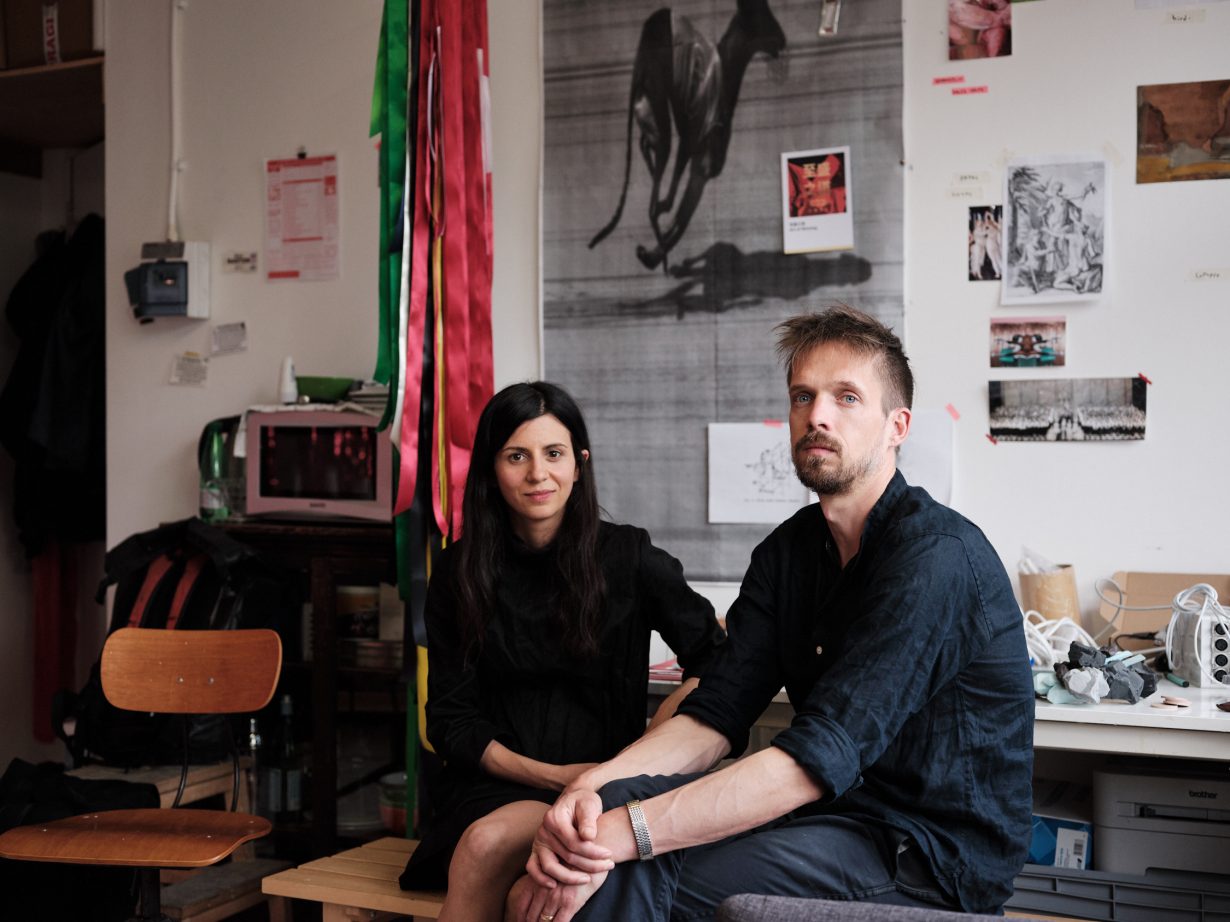
When Smoke Gets in Your Eyes
ArtReview A few of your videos over the past decade, like Dissolution (I Know Nothing), Trapped in the Dream of the Other and most recently Daughter of Dog, feature moments of coloured smoke, as if signalling a warning or a call for help. As one of several recurring images – like horses, or the ouroboros – in your installations, what is the significance of smoke as a motif drifting through your work?
Revital Cohen Daughter of Dog came from a period of grief. I couldn’t really make work at that moment, and I was writing an elegy of sorts without knowing what would come from it, collecting images and texts in a weird associative loop. The smoke you refer to came from a found photograph of a military training session with mustard gas. Mustard gas is something that’s lodged deep in my psyche; I grew up in Jerusalem during the Gulf War. At age ten, we were all given gas masks and told about mustard gas. My father’s family is Iraqi, and any mustard gas attack, we were told, was going to come from Iraq.
Later, when my father was ill, I found out there was mustard gas in the chemotherapy he was receiving. There was something intriguing about the use of poison as cure, which I suppose is what chemotherapy is. But the fact that this particular poison – of which I was so terrified as a child and felt oddly related to – was now something with a kind of hope attached to it, felt meaningful. When I saw those training images with yellow coloured smoke, it also brought me back to our years of working with firework manufacturers in Liuyang in China, and a film we made in the coltan mines, which included coloured smoke. There are some materials we work with for so long that when I see them again, even out of context, I feel ‘that’s mine’, that’s part of my vocabulary.
Tuur Van Balen Part of the motivation of Trapped in the Dream of the Other was to activate a supply chain between a coltan mine in Congo and where the coltan ends up – in electronics mostly made in China. We were also intrigued by the history of fireworks, and the invention of gunpowder as a substance that can be so spectacular and yet so violent. A lot of the fireworks we made were more like stage pyrotechnics, because they needed to be safe enough for the miners and for me to be filming nearby.

Eight or Nine Brains
AR Following on from how you’re discussing grief, your installations seem to have certain starting points – say, the theory of octopi originating from an extraterrestrial virus (in Heavens), or gambling in The Odds (Part 1) – that don’t necessarily feature directly in the work itself. How do you decide if an idea is going to be a method, rather than a subject?
RC The work often starts from an obsession with something; after that, I’ll make my way backwards through words, images or associations that may shed light on a more emotional or personal experience of it – so the starting point won’t be reproduced directly in the work. It’s an arrangement of subtleties. In the end, the ambition, from my side anyway, is never to tell a story but more to open up a feeling. How do I translate that feeling into words, images, sound?
TVB I am more fascinated with the process. When we were making Heavens, we wanted to think about the octopus without the octopus ever being present. There was a point where we had eight or nine other people involved because the octopus has eight or nine brains; so for each work, the subject matter affects the structure and how it gets made. For me the making of the work is often just an excuse to follow my curiosities and dance within entanglements that are both personal and political.
RC There’s a beginning point, but the focus for me is the question I find hard to answer. With Daughter of Dog, although the work started from a place of grief, the question became: where can I find a balance between what appears to be very violent and aggressive, and is also, at the same time, beautiful or loving? Where is a place of ambiguity between these two opposites?
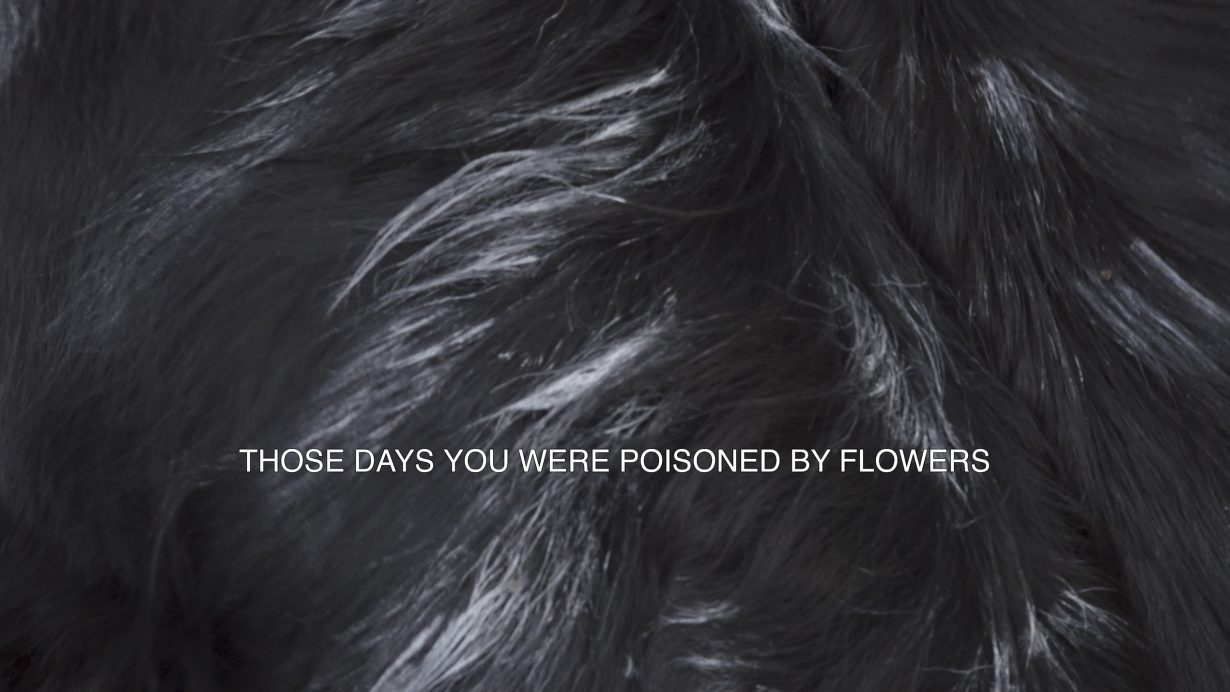
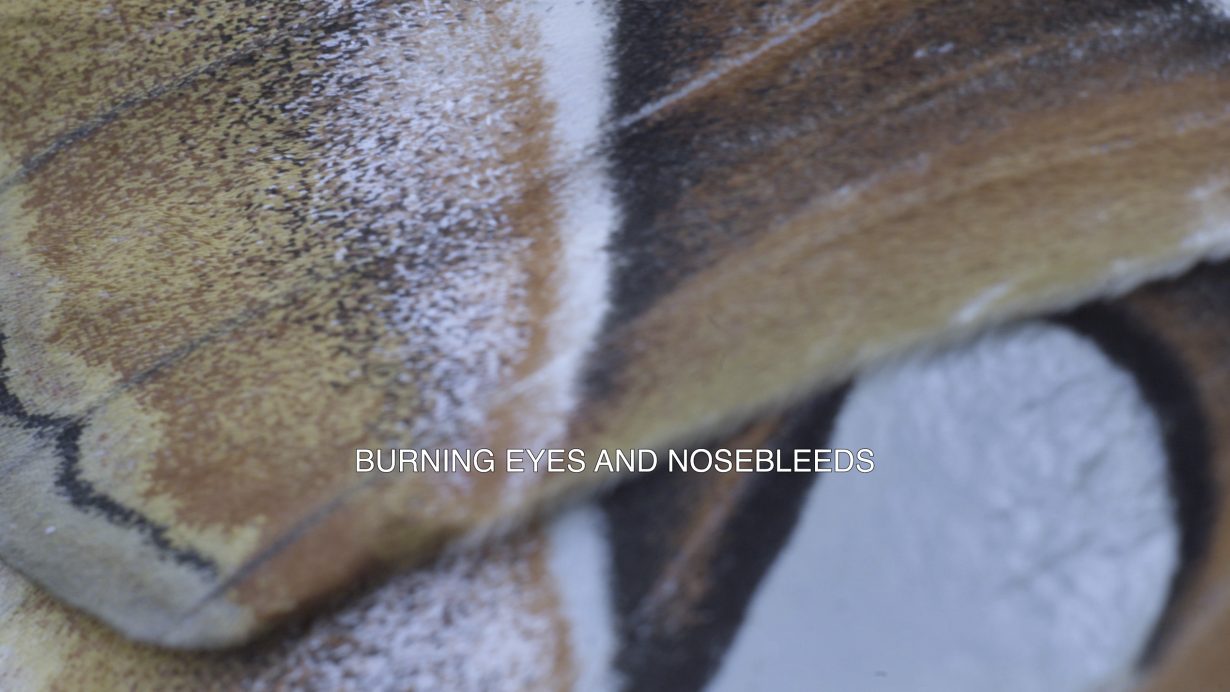
Horse As Artist
AR There’s a particular use of metaphor in your work; gambling as a symbol for economy and capitalism, or minerals as a symbol for the technology they end up in. In your 2022 monograph, Not What I Meant But Anyway, you quote the anthropologist Rebecca Cassidy, who writes that the ‘Thoroughbred [horse] is essentially an expression of empire’. Is it a never-ending chain of metonymies?
RC The Thoroughbred horse was, for many years, a stand-in for my experience of being an artist – being competitive, but very performative: everyone’s commenting on you.
AR So, the horse as artist.
RC Definitely; the racehorse.
TVB Or the artist as horse. Or a gambler.
RC Tuur often says I’m quite religious. I’m not, on paper, but I can’t help finding certain things to be deeply meaningful. I’m drawn to anything that holds symbolic meaning or stands in for complicated ideas, realities, histories or fantasies.
TVB I’m more interested in the tension between the symbol and what it represents, and what the thing actually is. Maybe we can say, as Cassidy wrote, that the horse stands in for the empire. At the same time, when you start scratching at it, a Thoroughbred racehorse is defined through the male bloodline, which itself can be traced back to three historic stallions. The Thoroughbred is seen as an English icon, but these were Arabian and Turkish horses. If you can actually read the DNA of the horse, it cannot remain purely a symbol. Sometimes there’s a tension between what the thing is and what it somehow represents.
RC None of this would be at all interesting if these were not animals, creatures that have deep relationships with people, relationships full of love, different kinds of connection, hurt, failure and success. It only becomes meaningful because the creature is meaningful.

TVB From my side more than yours, there is this interest in wider systems, and how these wider systems are experienced on a personal level: what are the contradictions? Of course, speculation is an important driver of the economic system we live in. A psychologist we spoke to explained that a gambler never feels like they’re losing: they’re always nearly winning. This constructed feeling is inherent in the architecture of casinos. It’s in how the slot machine operates.
RC The body of work around gambling started from an interest in the Sands casino in Macau. It appears to be a lighthearted hall of entertainment, a place that is extravagantly ornate and openly masquerading: everything’s fake and in your face. But it’s a profoundly real place in terms of its effect on geopolitics, because so much money made from it goes to create serious realities; it was where billionaire Sheldon Adelson made most of his money, which he used to fund Netanyahu and Trump, changing politics. He’s not a rich person who just invests in, say, racehorses.
AR But even from everything that springs from that horse symbology, how does that then lead to the Roan (2020–24) series, where you grind up a horse and spray it on some steel, to look like a nice abstract painting?
TVB We both have a background in design and an affinity for materials, and we are also deconstructors of sorts. Powder coating is just an industrial process for coating metals; it historically used bone ash, being a ceramic process, just like bone china. You can still buy a bag of bone ash for ceramics, it just tends to be cow bone, and you don’t really know where it comes from. The animal remains in the industrial process – it was just this small nugget in the back of our minds, and then when we were working with the racehorses, inevitably, we…
RC … were like, maybe now we do some powder coating. We became fascinated by George Stubbs, and the history of horse paintings and the arts, which is part of the gambling universe. Cassidy writes in her book on horses that Stubbs and the nineteenth-century horse painters were brand managers for the product that is a Thoroughbred racehorse. We think of the Roan series as horse paintings.

Rabbit Holes
AR There is geographical distance, and emotional and historical distance, being traversed in each work; but like the weird celebration of fireworks in a mine, it’s not just moving between continents, but contexts and tones. I’m wondering about the effect of such placements and displacements on people experiencing one of your installations. How much is the experience of these cumulative dispersals the work itself?
TVB With the works we made in Congo or in China, it’s like this object [points at smartphone on table] is already bringing up issues – of, say, labour and extraction – that come with their own politics and history. It doesn’t have to be technological artefacts – it could be animal breeding or family histories. Once you start to scratch at the surface of these realities you end up in different places and different times. The work can sometimes be an excuse to go down these rabbit holes, to find these stories, follow them, document them. But sometimes it can also be used to enact a form of intervention, to short-circuit some of the connections in order to see how this network responds.
RC We’ve used the term ‘apophenia’ to describe the experience of our exhibitions – the feeling of seemingly disconnected things being somehow related. I don’t mind if the connections are clear or not, it’s the alchemical outcome of these collages that matters. In recent years I’ve been more interested in how musicians make albums than in how artists make exhibitions or artworks. I found Björk’s podcast about making her albums inspiring and oddly liberating. You’re just at a stage of your life, things occupy you and you accept them as your current internal monologue: the work comes out of that. Is it clear or not? Does it matter? No, because it drove the creation of a particular thing. And in a couple of years, I’ll be in a different place and another form of work will emerge.
AR There is the implicit suggestion, though, that the viewer should piece these disconnected things together. It made me think of Eve Kosofsky Sedgwick’s diagnosis of paranoia as a leading aspect of critical theory, defined by suspicion and a negative view of the world; or Thomas Elsaesser’s writings on the ‘mind-game film’, which trains you to problem-solve and face a capitalist world. Are these mind-game installations training us to seek out global entangled conspiracies?
RC I think, ideally, the work doesn’t ask you to do anything. Or it offers an experience similar to a song you hear and suddenly feel, ‘Oh, it’s about me.’ I love to be able to find myself in somebody else’s work, not bound to the intentions of its maker. Ideally, the work can also be experienced without being interpreted.
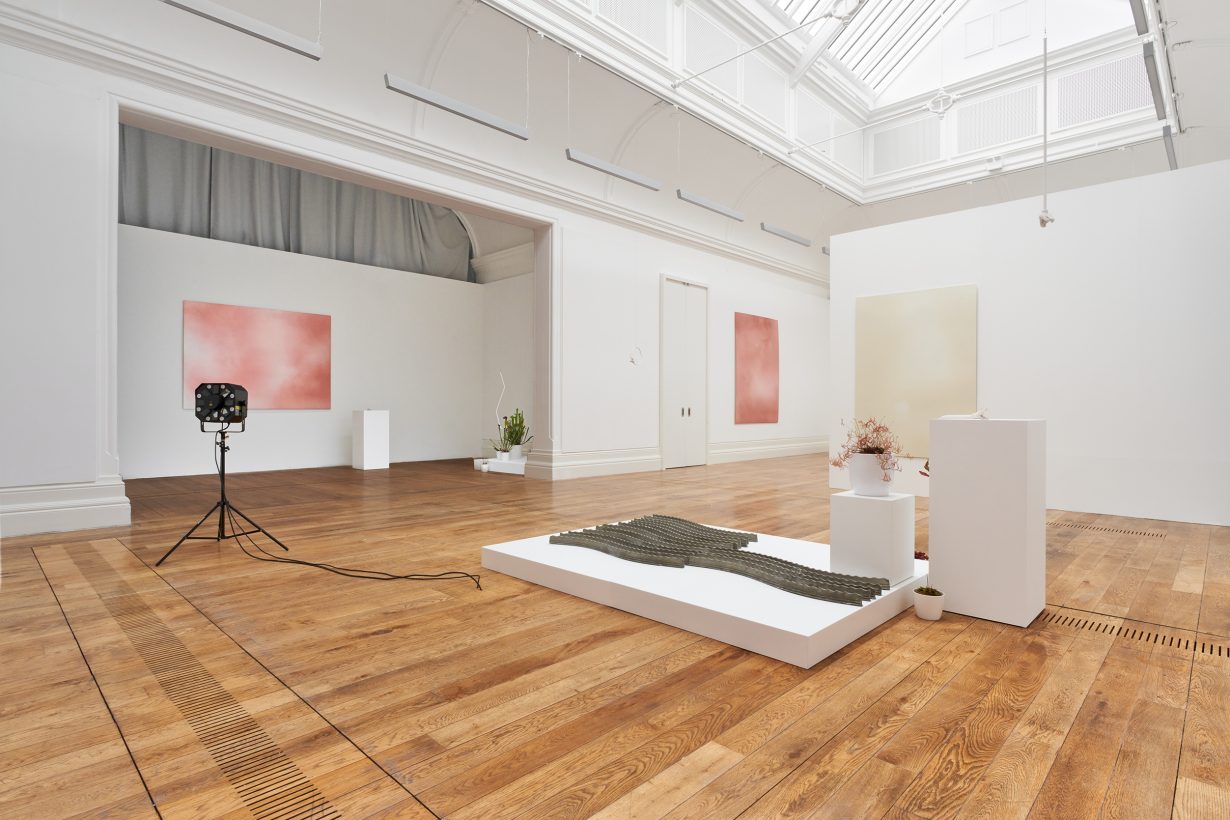
Camel Semen
AR Given the temporal and global sprawl of your work, what’s simmering right now?
TVB We’ve been making more and more film recently, and we’ve just started a long research project working with choreographers, thinking of moving image as a form of choreography.
RC In the films we’ve made since 2011, we would always have one shot where Tuur ends up chasing something and it would make quite a weird, unstable image. These would often be our favourite moments in the films. Slowly, we let go of the tripod, then the stabiliser. I really like it when the camera takes on the presence of Tuur as its operator. Our works can take years to make. We were going to film the breeding of camels in Dubai next, but it’s on hold.
TVB Not breeding camels – better. We’ve been planning to film with a group of scientists who invented a camel semen-harvesting sex doll. There’s something in their contraption which feels sinister, yet beautiful and still full of humour.
RC And we’re not nearly done with the horses.
